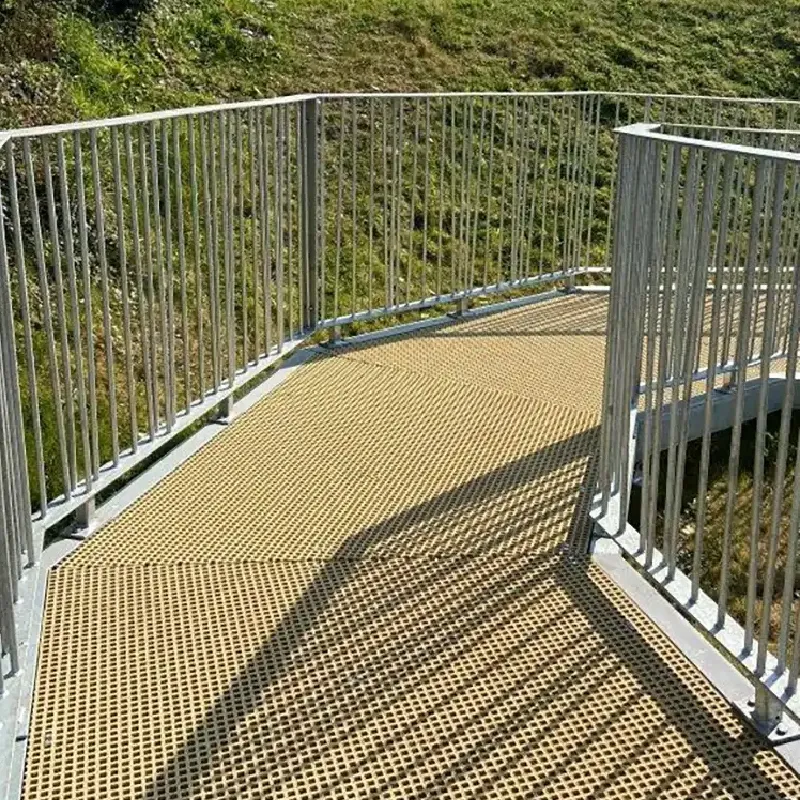loading...
- No. 9, Xingyuan South Street, Dongwaihuan Road, Zaoqiang County, Hengshui, Hebei, China
- admin@zjcomposites.com
- +86 15097380338
- Welcome to visit our website!
Innovative Applications of Molded FRP in Modern Engineering and Construction Projects for Enhanced Performance
Molded FRP Revolutionizing Materials in Modern Applications
Molded Fiber-Reinforced Polymer (MFRP) represents a significant advancement in composite materials technology, combining the benefits of both fiber reinforcement and polymer matrices. These materials are becoming increasingly popular due to their remarkable strength-to-weight ratios, corrosion resistance, and versatility in various applications. This article explores the composition, advantages, manufacturing processes, and diverse applications of molded FRP.
Composition of Molded FRP
Molded FRP typically consists of a polymer matrix that is reinforced with fibers, which can include materials such as glass, carbon, or aramid. This combination results in a structure that capitalizes on the lightweight nature of polymers while harnessing the strength and rigidity provided by the fibers. The choice of fibers can significantly influence the properties of the final product. Glass fibers are the most commonly used due to their excellent mechanical properties and cost-effectiveness. Carbon fibers offer superior strength and stiffness but at a higher cost, while aramid fibers are known for their impact resistance.
Advantages of Molded FRP
One of the standout features of molded FRP is its exceptional strength-to-weight ratio. This characteristic makes it an ideal choice for applications where minimizing weight is crucial without compromising structural integrity. Additionally, molded FRP exhibits excellent corrosion resistance, making it suitable for use in harsh environments, such as chemical processing plants and marine applications. The durability of these materials contributes to the longevity of products made from FRP, reducing maintenance costs and overall lifecycle expenses.
Moreover, molded FRP can be manufactured to achieve specific mechanical properties by varying the type and orientation of the reinforcing fibers. This customization allows engineers and designers to create components tailored to meet the precise demands of their applications, ranging from aerospace components to automotive parts and sporting goods.
Manufacturing Processes
molded frp

The manufacturing process of molded FRP can vary, but some common techniques include classical methods like hand layup, spray-up, and more advanced methods such as resin transfer molding (RTM) and vacuum-assisted resin infusion (VARI). Hand layup involves manually placing layers of fibers and resin in a mold, ensuring a high level of control over the final product’s quality. Conversely, techniques like RTM and VARI enable higher production rates and more consistent results, making them suitable for larger scale manufacturing.
The choice of manufacturing method will depend on factors such as the desired properties of the final product, production volume, and cost considerations. Advances in automation and technology are also paving the way for more efficient production methods, further enhancing the competitiveness of molded FRP in the marketplace.
Applications Across Industries
Molded FRP is making waves across various industries due to its unique properties. In the automotive sector, manufacturers utilize FRP for producing lightweight components that enhance fuel efficiency while maintaining strength and safety standards. In aerospace, lightweight FRP parts contribute to improved performance and reduced emissions.
Furthermore, the construction industry benefits from FRP’s resistance to corrosion in structures like bridges and tunnels, ensuring safety and longevity. Additionally, molded FRP is finding applications in consumer products such as sports equipment and furniture, where both aesthetics and functionality are paramount.
Conclusion
Molded Fiber-Reinforced Polymer stands at the forefront of materials technology, offering an array of advantages that cater to the needs of modern industries. As innovations continue to emerge in composite manufacturing, molded FRP is poised to play a vital role in shaping the future of material science. Its ability to combine lightweight properties with strength and durability makes it an invaluable resource in an ever-evolving technological landscape. As industries seek sustainable and efficient solutions, molded FRP is undoubtedly a key player in material advancements.
-
Transform Your Spaces with FRP Grating SolutionsNewsNov.04,2024
-
The Versatility and Strength of FRP RodsNewsNov.04,2024
-
The Excellence of Fiberglass Water TanksNewsNov.04,2024
-
The Benefits of FRP Grating for Your ProjectsNewsNov.04,2024
-
Elevate Your Efficiency with FRP Pressure VesselsNewsNov.04,2024
-
Welcome to the World of FRP Pressure VesselsNewsOct.12,2024
-
Unveiling the Future of Filtration: Why FRP Filter Vessels are a Game ChangerNewsOct.12,2024
